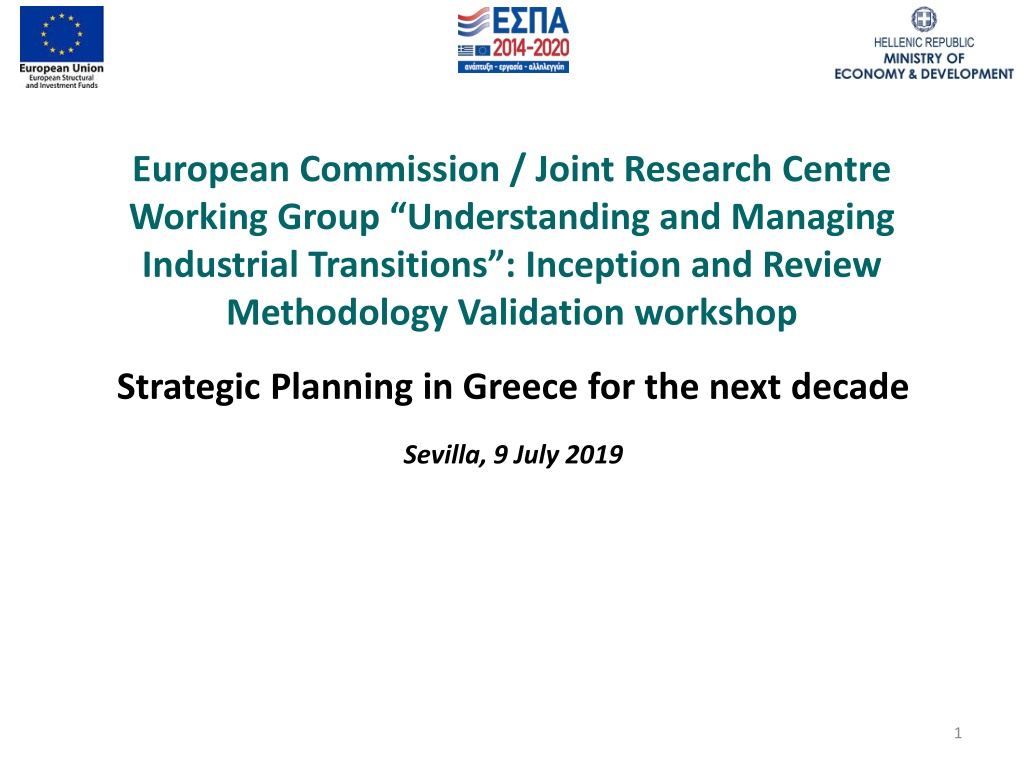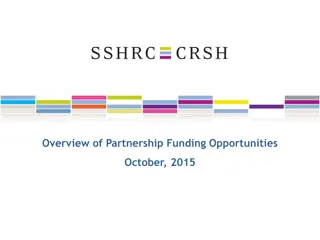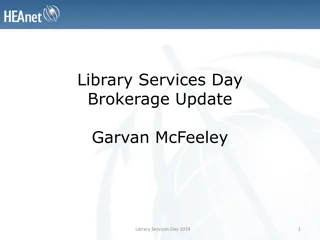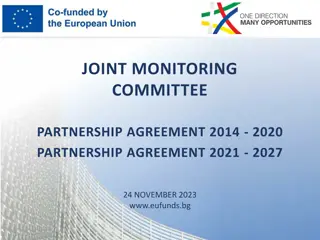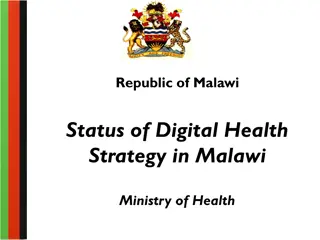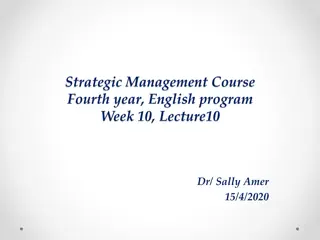Greece's Growth Strategy for the Future: Strategic Planning and Partnership Agreements
Greece's national strategy for sustainable growth focuses on fiscal sustainability, fostering growth, structural conditions, fair and inclusive growth, and financing growth. Pillars include job creation, productivity enhancement, social economy promotion, and investment incentives. The planning process for the Partnership Agreement 2021-2027 is underway, involving various stakeholders and aiming for official submissions to the European Commission by 2020.
Download Presentation

Please find below an Image/Link to download the presentation.
The content on the website is provided AS IS for your information and personal use only. It may not be sold, licensed, or shared on other websites without obtaining consent from the author. Download presentation by click this link. If you encounter any issues during the download, it is possible that the publisher has removed the file from their server.
E N D
Presentation Transcript
European Commission / Joint Research Centre Working Group Understanding and Managing Industrial Transitions : Inception and Review Methodology Validation workshop Strategic Planning in Greece for the next decade Sevilla, 9 July 2019 1
Outline of the presentation Greece: A Growth Strategy for the Future Planning of the Partnership Agreement 2021-2027 OECD Territorial Review: Regional Policy for Greece Post 2020 National Energy and Climate Plan 2
Greece: A Growth Strategy for the Future The National Strategy for Sustainable and Fair Growth 2030 was published in July 2018 by the Greek Government. It was presented to the Eurogroup on April 27, 2018. The strategy has incorporated the results of a broad and open round of consultations held on many levels, mainly through the process of Regional Development Conferences. It adopts a holistic way of planning and embraces the three dimensions (economic, social, and environmental) set out in the Sustainable Development Goals (SDGs). In May 2019 the Greek authorities have proceeded to the 1st update of the Strategy. 3
Greece: A Growth Strategy for the Future Five (5) pillars: 1. Ensuring Fiscal Sustainability 2. Fostering Sustainable Growth 3. Structural Conditions for Growth (infrastructure, networks, etc.) 4. Fair and Inclusive Growth 5. Financing Growth 4
Greece: A Growth Strategy for the Future Pillar 2: Fostering Sustainable Growth Creating More and Better Jobs Enhancing productivity, innovation and competitiveness Improving the business environment and boosting investment Pillar 3: Fair and Inclusive Growth Promoting the Social and the Circular Economy . Pillar 5: Financing Growth The Development Law 4499/2016 provides incentives for private investments. Special financial support is provided to innovative SMEs. 5
Planning of the Partnership Agreement 2021- 2027 The planning process of the Partnership Agreement (PA) 2021- 2027 has begun. The Ministry of Economy and Development has already asked ministries, regions, socio-economic partners and civil society organizations to come forward with proposals on the guidelines for the preparation of the PA as well as the Operational Programmes. These proposals are expected to be submitted in September. The official submission of the PA to the European Commission will take place in March 2020. The official submission of the Operational Programmes to the European Commission will take place on 30 June 2020. 6
Planning of the Partnership Agreement 2021- 2027 According to the Commission proposal, the majority (65%) of resources (EU support) will be concentrated on contributing to the policy objectives which evaluation evidence and the impact assessment suggest have the highest added value, as well as the greatest contribution to EU priorities: Policy Objective 1:"a smarter Europe by promoting innovative and smart economic transformation (35% of resources i.e. 3.578 M ); Policy Objective 2: "a greener, low-carbon Europe by promoting clean and fair energy transition, green and blue investment, the circular economy, climate adaptation and risk prevention and management" (30% of resources i.e. 3.067 M ). 7
Planning of the Partnership Agreement 2021- 2027 Good governance of national or regional smart specialisation strategy is an enabling condition for the Policy Objective 1. Fulfilment criteria for the enabling condition Smart specialisation strategy(ies) shall be supported by: 1. Up-to-date analysis of bottlenecks for innovation diffusion, including digitalisation 2. Existence of competent regional / national institution or body, responsible for the management of the smart specialisation strategy 3. Monitoring and evaluation tools to measure performance towards the objectives of the strategy 4. Effective functioning of entrepreneurial discovery process 5. Actions necessary to improve national or regional research and innovation systems 6. Actions to manage industrial transition 7. Measures for international collaboration. It is therefore necessary to design new national / regional smart specialization strategies. 8
OECD Territorial Review: Regional Policy for Greece Post 2020 The Greek Government (Ministry of Economic and Development) and the European Commission (under Regulation (EU) 2017/825 on the establishment of the Structural Reform Support Programme) have engaged the OECD to develop a Territorial Review on Regional policy for Greece post 2020 . The OECD methodology for Territorial Reviews can provide key public and private stakeholders with an independent and internationally recognised diagnostic of key trends, challenges and untapped opportunities, as well as recommendations on policies, strategies, planning, multi-level governance and resource allocation, based on successful experience in other OECD countries. 9
OECD Territorial Review: Regional Policy for Greece Post 2020 The Review will address four key aspects: Socio-economic trends, growth potential and underexploited resources Policies and strategies for development and inclusive growth Multi-level governance for Regional and Cohesion policy Capacity for Regional and Cohesion policy programming and implementation 10
National Energy and Climate Plan targets (2030) REDUCTION OF GHGs EMISSIONS AND ENVIRONMENTAL TARGETS Reduction of GHGs emissions (non-ETS) vs 2005 > 16% Reduction of GHGs emissions (ETS) vs 2005 > 43% Reduction of other gases emissions (SO2, NOX, etc) 11
National Energy and Climate Plan targets SHARE OF RENEWABLE ENERGY SOURCES 2016 2030 Share of RES in gross final energy consumption 15,23% >31% Share of RES in the heating and cooling sector 24% >30% Share of RES in the gross final consumption of electricity 23,8% >56% Share of RES in the transport sector 2% >14% 12
National Energy and Climate Plan targets 3/3 ENERGY EFFICIENCY 2016 2030 Primary energy consumption (Mtoe) 23,6 <25 Final energy consumption (Mtoe) 16,7 <18,1 Cumulative amount of energy savings 2021- 2030 (Mtoe) >7 Renovation of the public buildings*(% of the total floor area per year) *Buildings of central public administration. 3% 13
Measures of the National Energy and Climate plan in all six thematic dimensions LEGISLATIVE MEASURES LEGISLATIVE MEASURES 8 POLICY PRIORITIES 9 POLICY PRIORITIES ECONOMIC MEASURES ECONOMIC MEASURES EE RES TECHNICAL MEASURES TECHNICAL MEASURES LEGISLATIVE MEASURES LEGISLATIVE MEASURES 4 POLICY PRIORITIES 8 POLICY PRIORITIES ECONOMIC MEASURES ECONOMIC MEASURES GHGs Security of supply TECHNICAL MEASURES TECHNICAL MEASURES LEGISLATIVE MEASURES LEGISLATIVE MEASURES 10 POLICY PRIORITIES 5 POLICY PRIORITIES R&I , ECONOMIC MEASURES ECONOMIC MEASURES Energy Market competitiveness TECHNICAL MEASURES TECHNICAL MEASURES
In conclusion The timing is ideal for integrating the results of the work of the working group Understanding and Managing Industrial Transitions in the national strategic plans and operational programmes. ( ) he times do not wait (Thucydides) 15
The SMALL Size of the R&I system in greece R&D Expenditure as a percentage of GDP (2017) 16
But the system is dynamic ! R&D Expenditure 2011-2017 17
the business sector is the most dynamic R&D expenditure by sector 2011-2017 18
But it is always lagging behind Comparisons with the EU countries 19
The main strategy : National RIS3 2014 -2020 Focuses in 8 domains Agrifood Energy Information and Communication Technologies Environment and Sustainable Development Health and Pharmaceuticals Transportation and Supply Chain Tourism, Culture and Creative Industries Materials and Construction 20
The national RIS3 2014 -2020 Methodology COORDINATOR (Expert from GSRT) STEERING GROUP (Experts from Enterprises, Research Centers, Universities) THE ASSEMBLY OF THE PLATFORM (Enterprises, Researchers, Academicians, Staff of National and Regional AuthoritiesCivil Society etc.) 21
The demand of the system is high RESEARCH CREATE - Percenta ge Differenc e 82% -3% 55% 25% 33% INNOVATE (in million Euros) A' Call 2017 65 108 97 154 172 B' Call 2019 118 105 149 193 228 TRANSPORT, LOGISTICS ENERGY MATERIALS, CONSTRUCTION ENVIRONMENT TOURISM, CULTURE INFORMATION AND COMMUNICATION TECHNOLOGIES HEALTH - PHARMACEUTICALS AGRIFOOD TOTAL 263 258 278 1395 285 291 367 1737 9% 13% 32% 24% 22
Other Implementation Special Actions (Aquaculture, Industrial materials, Innovation in Culture) R&I Infrastructures Strategic development of Research Institutions Bilateral Multilateral actions (Germany, Russia, China, Israel, ERANETs) Regional Excellence (reinforcing the weak regions) 23
Other Actions The Greek Foundation for Research and Technology (ELIDEK) (Doc, Post Doc, University research) Objective : mitigate the brain drain, promoting the brain circulation Flagship projects (Precision medicine (cancer), Quantum technologies, Agrifood (vine, olive, honey), Climate change, Cardiovascular Diseases etc) 25
